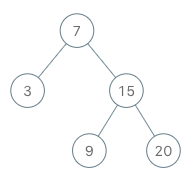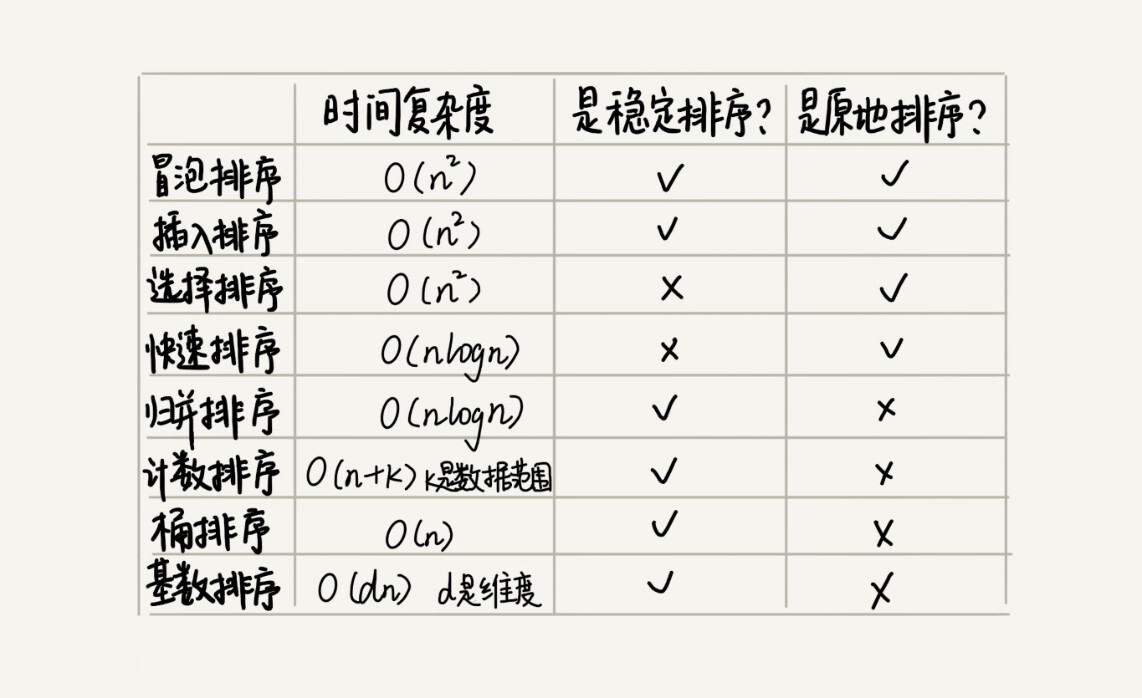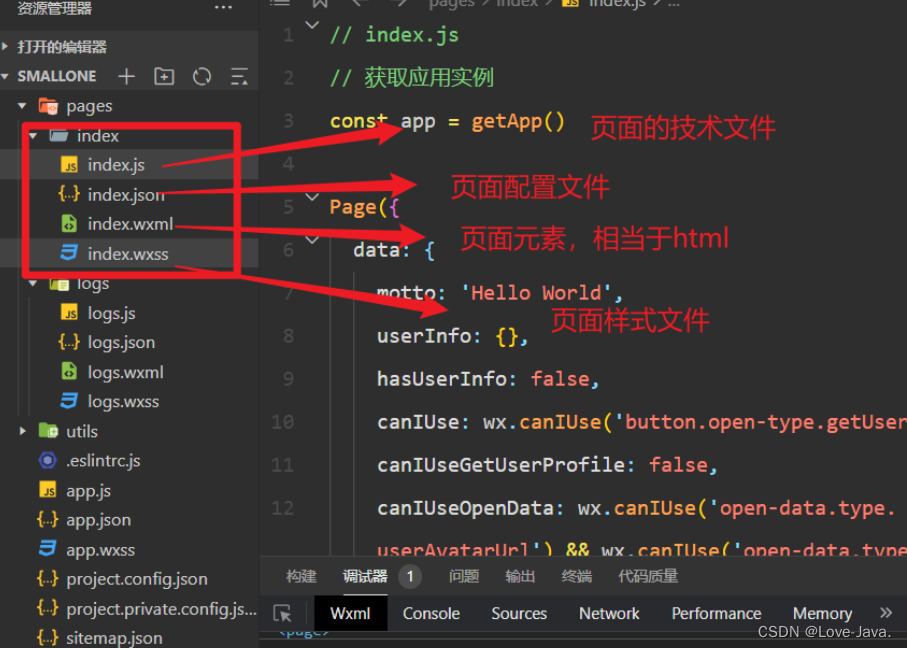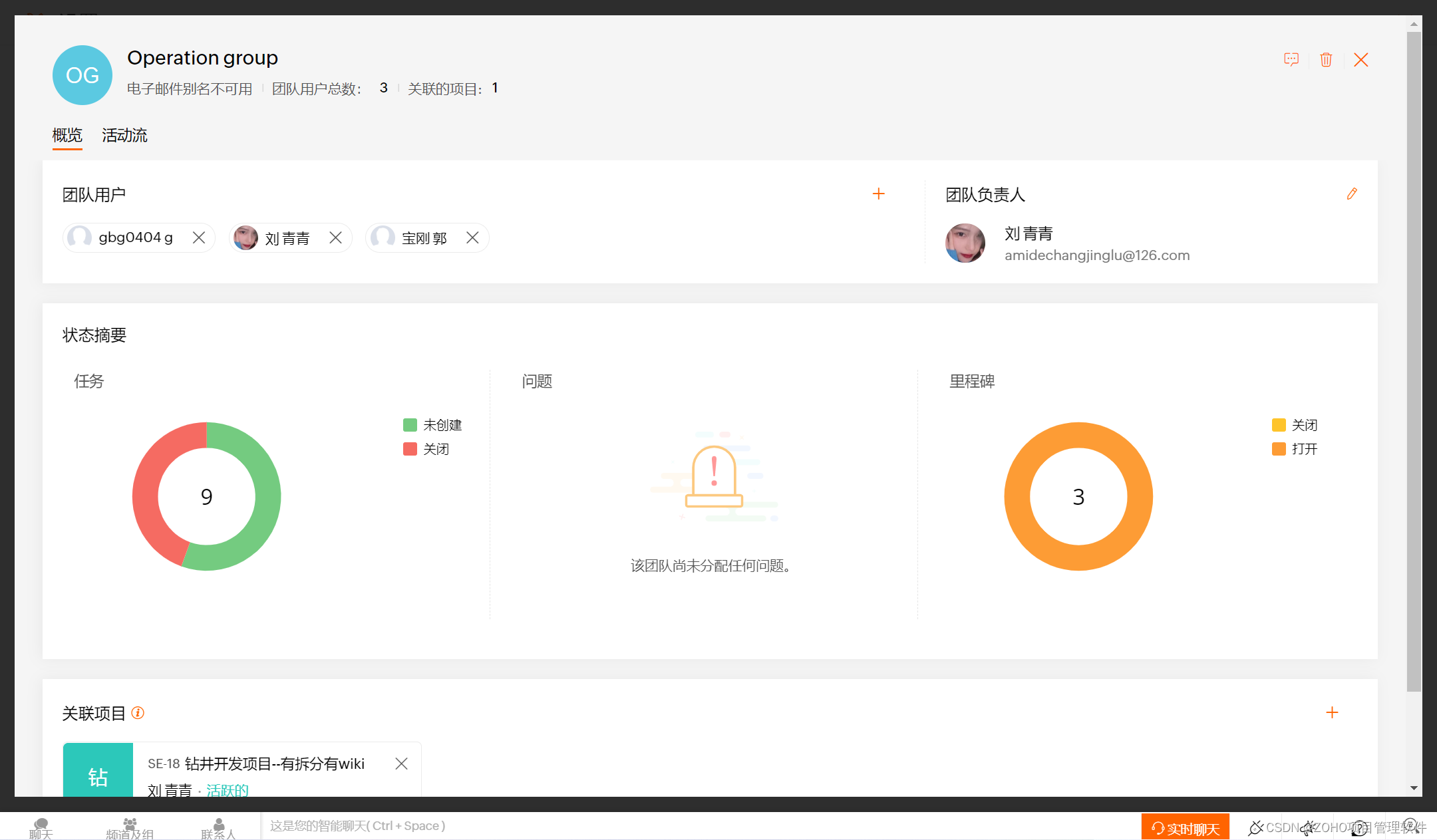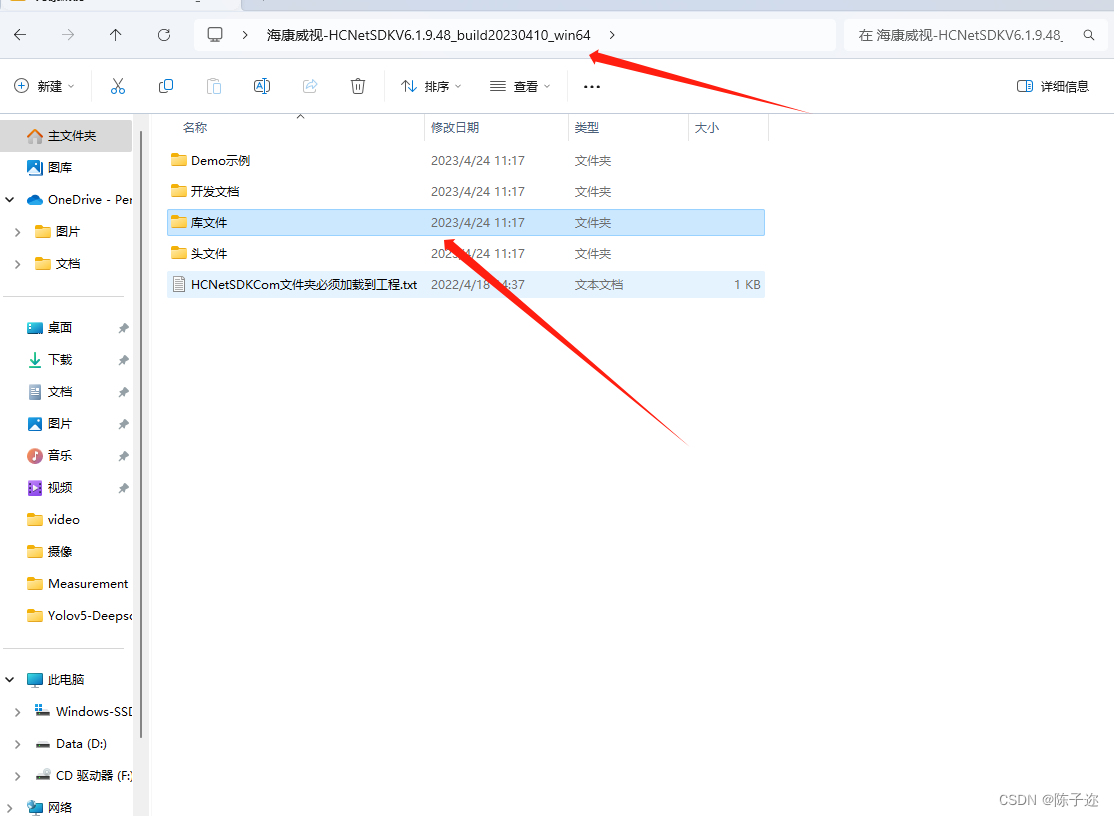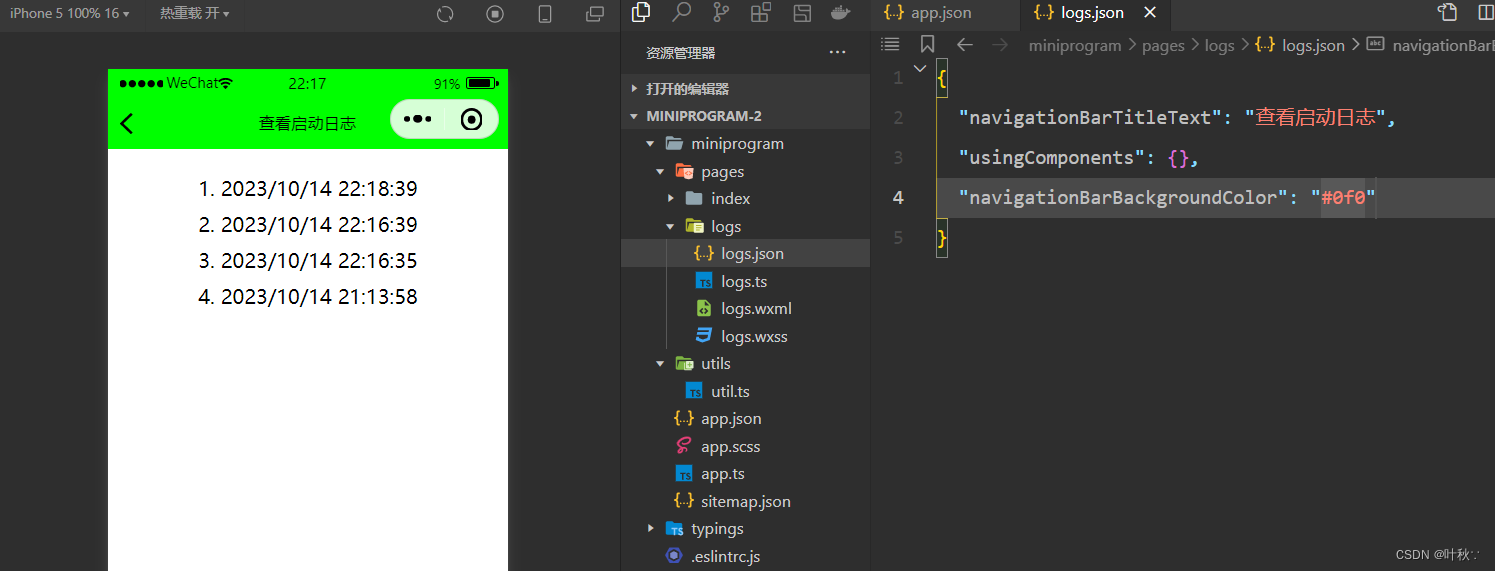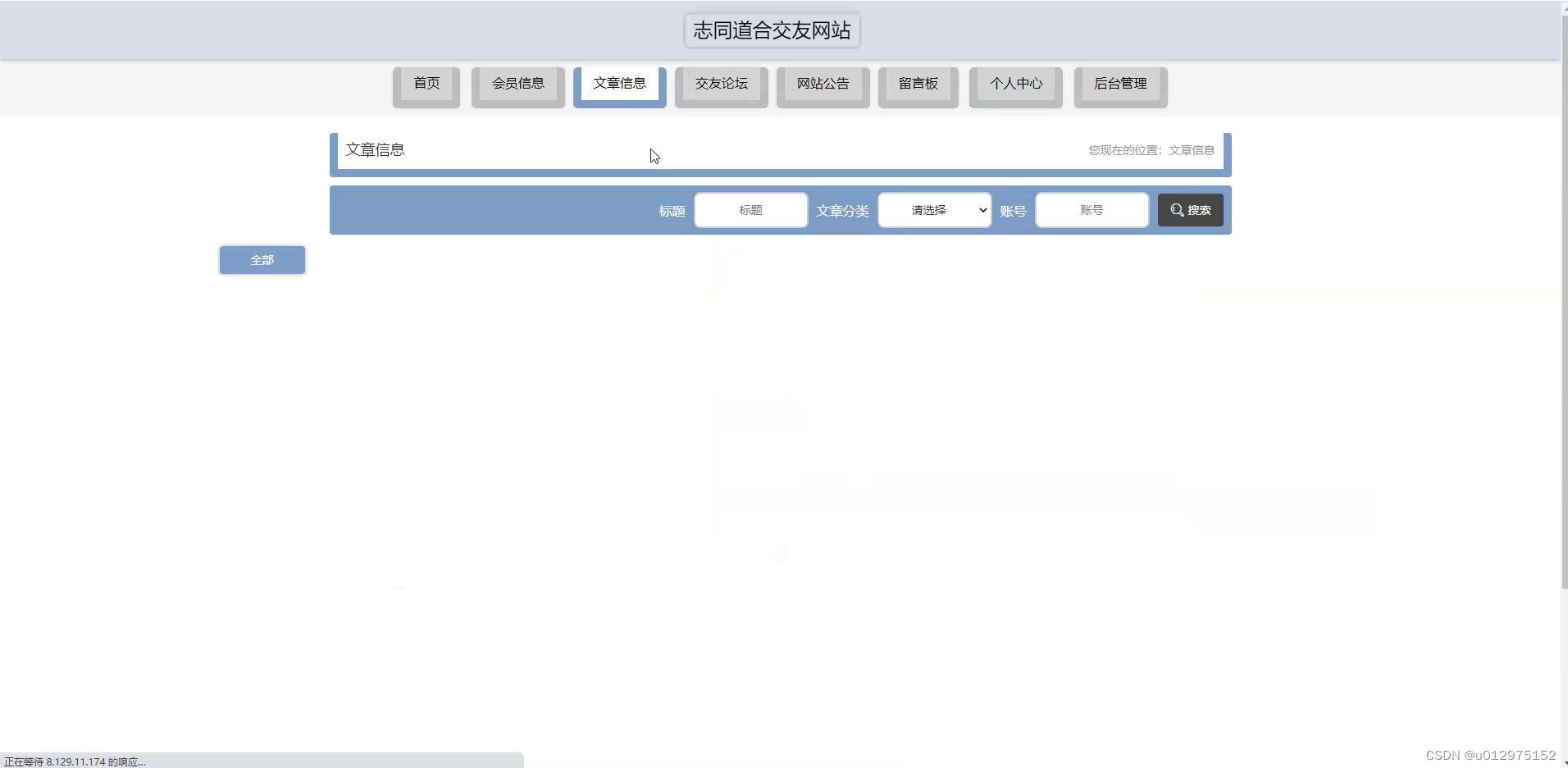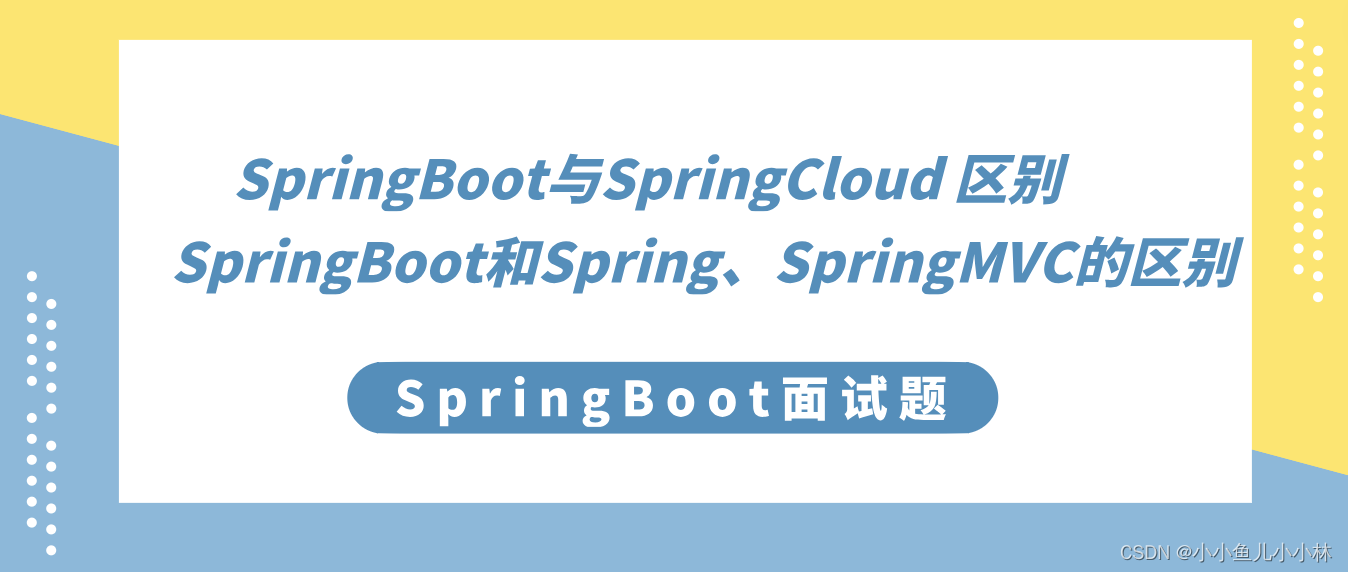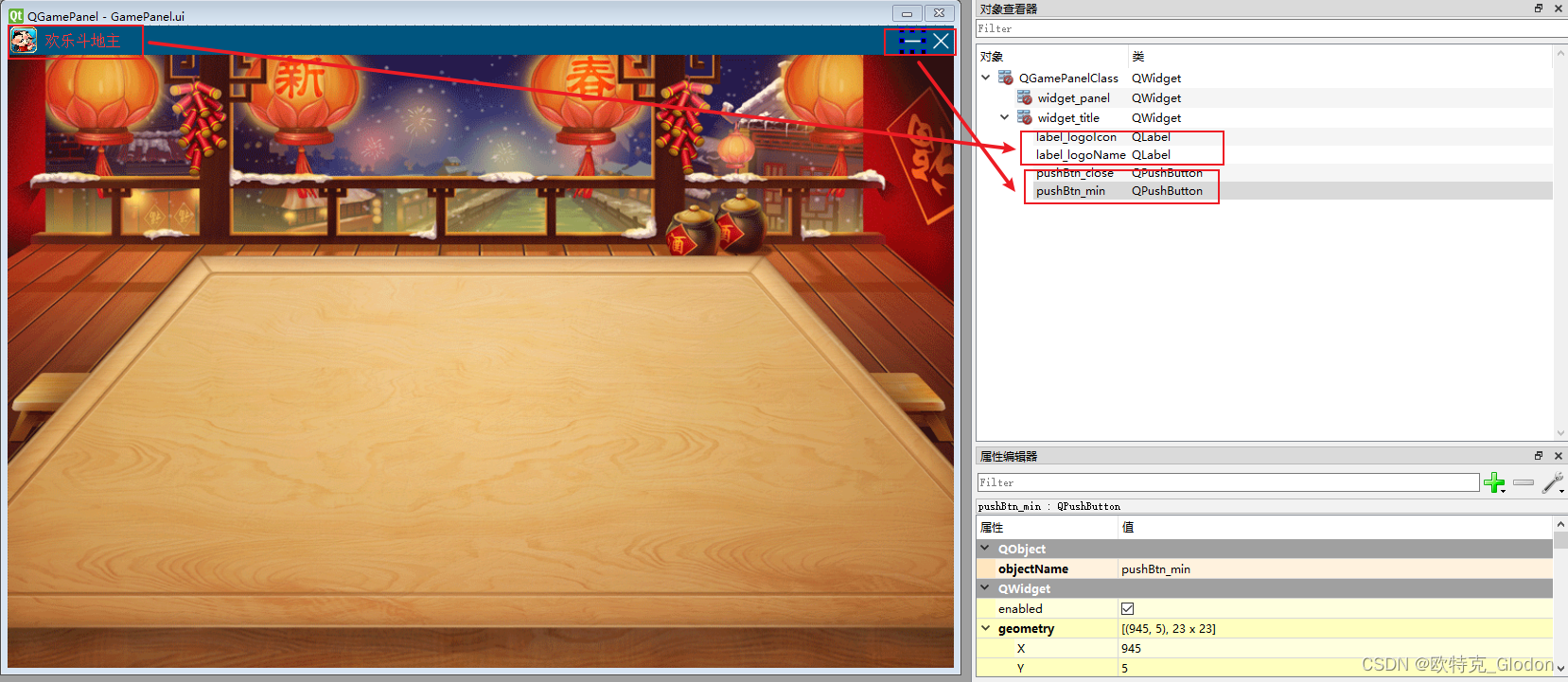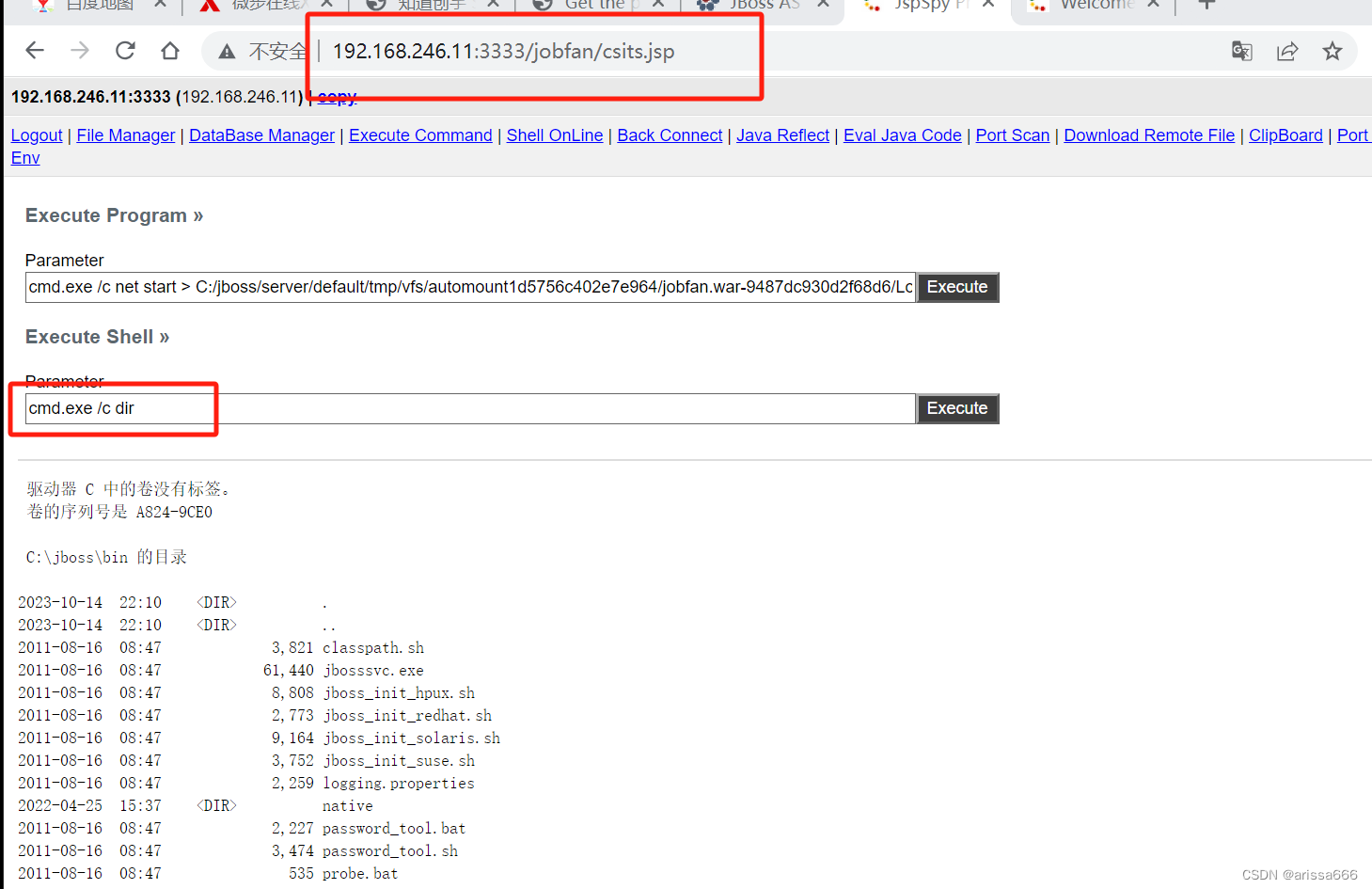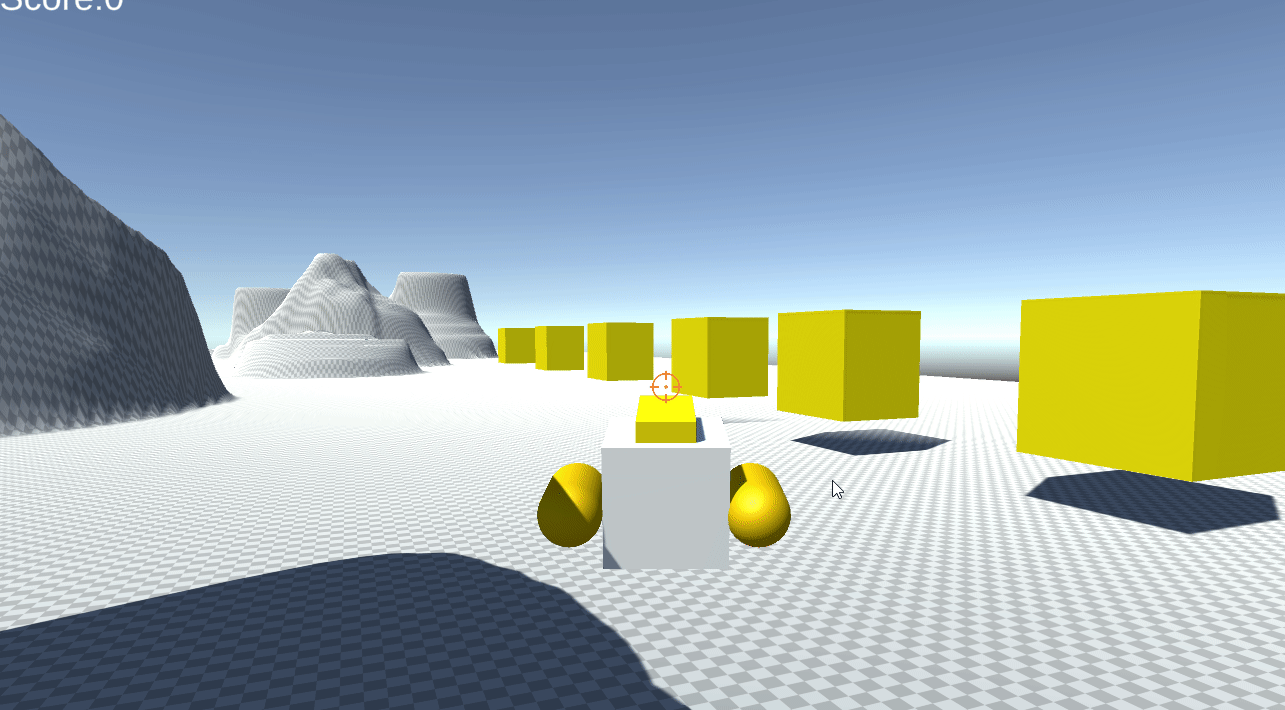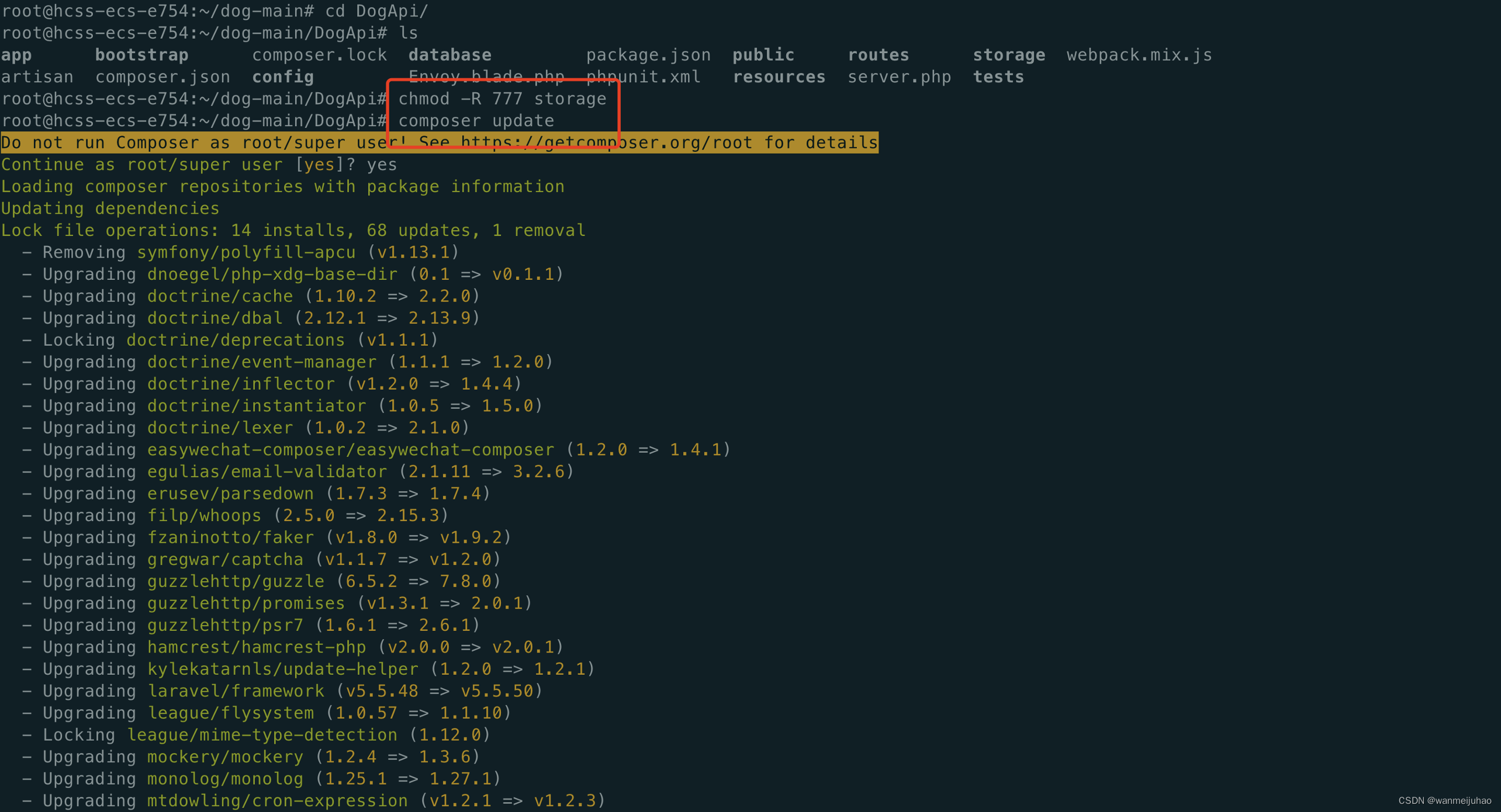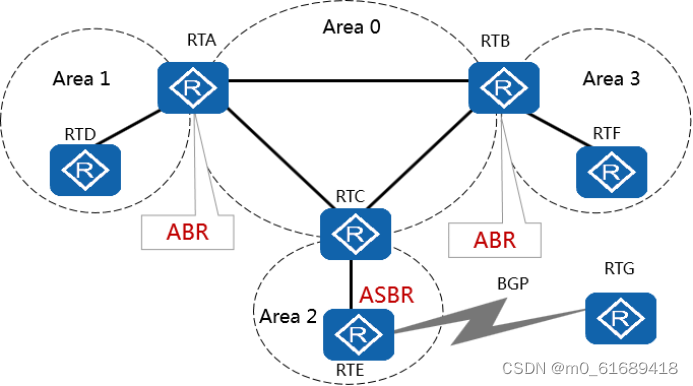组件从创建到死亡它会经历一些特定的阶段。
React 组件中包含一系列勾子函数(生命周期回调函数 <=> 生命周期钩子函数 <=> 生命周期函数 <=> 生命周期钩子),会在特定的时刻调用。
我们在定义组件时,会在特定的生命周期回调函数中,做特定的工作。
一、react 生命周期旧
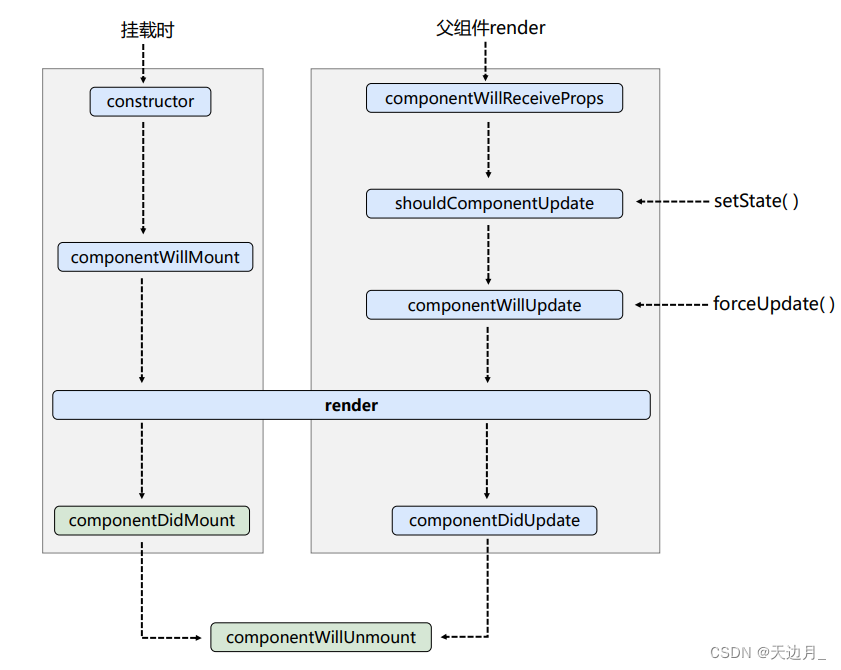
初始化阶段:由 ReactDOM.render() 触发,初次渲染
1、构造器:constructor()
2、组件将要挂载的钩子:componentWillMount()
3、组件渲染或组件更新的钩子:render()
4、 组件挂载完毕的钩子:componentDidMount()
更新阶段:由组件内部 this.setSate() / this.forceUpdate() 或父组件 render 触发
1、控制组件更新的 “阀门” :shouldComponentUpdate()
2、组件将要更新的钩子:componentWillUpdate()
3、组件渲染或组件更新的钩子:render()
4、组件更新完毕的钩子:componentDidUpdate()
卸载组件:由 ReactDOM.unmountComponentAtNode() 触发
1、组件将要卸载的钩子:componentWillUnmount()
父组件 render:组件 props 值改变触发
1、组件将要接收新的 props 的钩子:componentWillReceiveProps()
二、react 生命周期新
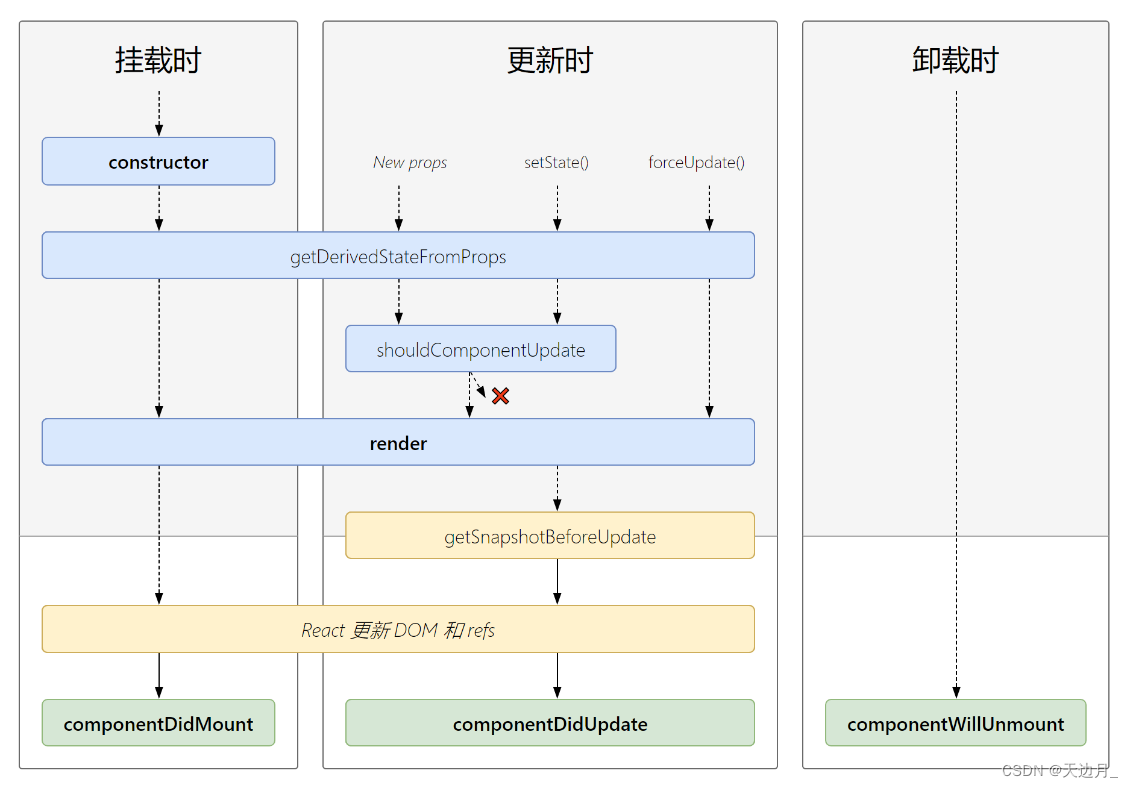
初始化阶段:由 ReactDOM.render() 触发,初次渲染
1、构造器:constructor()
2、从 props 得到一个派生状态:static getDerivedStateFromProps()
3、组件渲染或组件更新的钩子:render()
4、 组件挂载完毕的钩子:componentDidMount()
更新阶段:由组件内部 this.setSate() / this.forceUpdate() 或父组件 render 触发
1、static getDerivedStateFromProps()
2、控制组件更新的 “阀门” :shouldComponentUpdate()
3、组件渲染或组件更新的钩子:render()
4、在更新之前获取快照:getSnapshotBeforeUpdate()
5、组件更新完毕的钩子:componentDidUpdate()
卸载组件:由 ReactDOM.unmountComponentAtNode() 触发
1、组件将要卸载的钩子:componentWillUnmount()
三、新旧生命周期总结
重要的勾子
1、组件渲染或组件更新的钩子:render()
2、组件挂载完毕的钩子:componentDidMount()
一般在这个钩子中做一些初始化的事,例如:开启定时器、发送网络请求、订阅消息
3、组件将要卸载的钩子:componentWillUnmount()
一般在这个钩子中做一些收尾的事,例如:关闭定时器、取消订阅消息
即将废弃的勾子
现在使用会出现警告,下一个大版本需要加上 UNSAFE_ 前缀才能使用,以后可能会被彻底废弃,不建议使用。
1、组件将要挂载的钩子:componentWillMount()
2、组件将要接收新的 props 的钩子:componentWillReceiveProps()
3、组件将要更新的钩子:componentWillUpdate()
四、案例
案例1:引出生命周期
需求:定义组件实现以下功能:
1、让指定的文本做显示 / 隐藏的渐变动画
2、从完全可见,到彻底消失,耗时 2S
3、点击 “不活了” 按钮从界面中卸载组件
<!DOCTYPE html>
<html lang="en">
<head>
<meta charset="UTF-8">
<title>1_引出生命周期</title>
</head>
<body>
<!-- 准备好一个“容器” -->
<div id="test"></div>
<!-- 引入react核心库 -->
<script type="text/javascript" src="../js/react.development.js"></script>
<!-- 引入react-dom,用于支持react操作DOM -->
<script type="text/javascript" src="../js/react-dom.development.js"></script>
<!-- 引入babel,用于将jsx转为js -->
<script type="text/javascript" src="../js/babel.min.js"></script>
<script type="text/babel">
// 创建组件
class Life extends React.Component {
state = { opacity: 1 }
death = () => {
// clearInterval(this.timer) // 清除定时器(可以卸载componentWillUnmount中)
ReactDOM.unmountComponentAtNode(document.getElementById('test')) // 卸载组件
}
// 组件挂载完毕的钩子
componentDidMount() {
console.log('componentDidMount')
this.timer = setInterval(() => {
let { opacity } = this.state // 获取原状态
opacity -= 0.1 // 减小0.1
if (opacity <= 0) opacity = 1
this.setState({ opacity }) // 设置新的透明度
}, 200)
}
// 组件将要卸载的钩子
componentWillUnmount() {
console.log('componentWillUnmount')
clearInterval(this.timer) // 清除定时器
}
// 初始化渲染、状态更新之后 (state变化会触发render函数,定时器如果写在render中,会造成无限递归)
render() {
console.log('render')
return (
<div>
<h2 style={{ opacity: this.state.opacity }}>React学不会怎么办?</h2>
<button onClick={this.death}>不活了</button>
</div>
)
}
}
// 渲染组件
ReactDOM.render(<Life />, document.getElementById('test'))
</script>
</body>
</html>
案例二:React 生命周期旧
累加器,点击数值+1
<!DOCTYPE html>
<html lang="en">
<head>
<meta charset="UTF-8">
<title>2_react生命周期(旧)</title>
</head>
<body>
<!-- 准备好一个“容器” -->
<div id="test"></div>
<!-- 引入react核心库 -->
<script type="text/javascript" src="../js/react.development.js"></script>
<!-- 引入react-dom,用于支持react操作DOM -->
<script type="text/javascript" src="../js/react-dom.development.js"></script>
<!-- 引入babel,用于将jsx转为js -->
<script type="text/javascript" src="../js/babel.min.js"></script>
<script type="text/babel">
// 创建组件
class Count extends React.Component {
// 构造器
constructor(props) {
console.log('Count---constructor')
super(props)
this.state = { count: 0 } // 初始化状态
}
// 加1按钮的回调
add = () => {
const { count } = this.state
this.setState({ count: count+1 }) // 更新状态
}
// 卸载组件按钮的回调
death = () => {
ReactDOM.unmountComponentAtNode(document.getElementById('test'))
}
// 强制更新按钮的回调
force = () => {
this.forceUpdate()
}
// 组件将要挂载的钩子
componentWillMount() {
console.log('Count---componentWillMount')
}
// 控制组件更新的 “阀门”
shouldComponentUpdate() {
console.log('Count---shouldComponentUpdate')
// 不写时,默认值为true,代表允许组件更新;写了以后,必须有返回值Boolan,true/false
return true
}
// 组件将要更新的钩子
componentWillUpdate() {
console.log('Count---componentWillUpdate')
}
// 组件渲染或组件更新的钩子
render() {
console.log('Count---render')
const { count } = this.state
return (
<div>
<h2>当前求和为:{ count }</h2>
<button onClick={this.add}>点我+1</button>
<button onClick={this.death}>卸载组件</button>
<button onClick={this.force}>不更改任何状态中的数据,强制更新一下</button>
</div>
)
}
// 组件挂载完毕的钩子
componentDidMount() {
console.log('Count---componentDidMount')
}
// 组件更新完毕的钩子
componentDidUpdate() {
console.log('Count---componentDidUpdate')
}
// 组件将要卸载的钩子
componentWillUnmount() {
console.log('Count---componentWillUnmount')
}
}
// 渲染组件
ReactDOM.render(<Count />, document.getElementById('test'))
</script>
</body>
</html>
父组件 render 触发子组件 props 值改变
<!DOCTYPE html>
<html lang="en">
<head>
<meta charset="UTF-8">
<title>2_react生命周期(旧)</title>
</head>
<body>
<!-- 准备好一个“容器” -->
<div id="car"></div>
<!-- 引入react核心库 -->
<script type="text/javascript" src="../js/react.development.js"></script>
<!-- 引入react-dom,用于支持react操作DOM -->
<script type="text/javascript" src="../js/react-dom.development.js"></script>
<!-- 引入babel,用于将jsx转为js -->
<script type="text/javascript" src="../js/babel.min.js"></script>
<script type="text/babel">
// 父组件
class A extends React.Component {
// 初始化状态
state = { carName: '奔驰' }
changeCar = () => {
this.setState({ carName: '奥拓' })
}
render() {
return (
<div>
<div>我是A组件</div>
<button onClick={this.changeCar}>换车</button>
<B carName={this.state.carName}/>
</div>
)
}
}
// 子组件
class B extends React.Component {
// 组件将要接收新的props的钩子(props第一次接收值时不触发)
componentWillReceiveProps(props) {
console.log('B---componentWillReceiveProps', props)
}
// 控制组件更新的 “阀门”
shouldComponentUpdate() {
console.log('B---shouldComponentUpdate')
// 不写时,默认值为true,代表允许组件更新;写了以后,必须有返回值Boolan,true/false
return true
}
// 组件将要更新的钩子
componentWillUpdate() {
console.log('B---componentWillUpdate')
}
// 组件渲染或组件更新的钩子
render() {
console.log('B---render')
const { carName } = this.props
return (
<div>我是B组件,接收到的车是:{carName}</div>
)
}
// 组件更新完毕的钩子
componentDidUpdate() {
console.log('Count---componentDidUpdate')
}
}
// 渲染组件
ReactDOM.render(<A />, document.getElementById('car'))
</script>
</body>
</html>
案例三:React 生命周期新
新生命周期新增方法:
static getDerivedStateFromProps() 从props得到一个派生状态,此方法适用于罕见的用例,即 state 的值在任何时候都取决于 props 。派生状态会导致代码冗余。
getSnapshotBeforeUpdate() 在更新之前获取快照,此用法并不常见。它使得组件能在发生改变之前从 DOM 中捕获一些信息(例如,滚动位置)。此生命周期的任何返回值将作为参数传递给 componentDidUpdate()。
<!DOCTYPE html>
<html lang="en">
<head>
<meta charset="UTF-8">
<title>3_react生命周期(新)</title>
</head>
<body>
<!-- 准备好一个“容器” -->
<div id="test"></div>
<!-- 引入react核心库 -->
<script type="text/javascript" src="../js/17.0.1/react.development.js"></script>
<!-- 引入react-dom,用于支持react操作DOM -->
<script type="text/javascript" src="../js/17.0.1/react-dom.development.js"></script>
<!-- 引入babel,用于将jsx转为js -->
<script type="text/javascript" src="../js/17.0.1/babel.min.js"></script>
<script type="text/babel">
// 创建组件
class Count extends React.Component {
// 构造器
constructor(props) {
console.log('Count---constructor')
super(props)
this.state = { count: 0 } // 初始化状态
}
// 加1按钮的回调
add = () => {
const { count } = this.state
this.setState({ count: count+1 }) // 更新状态
}
// 卸载组件按钮的回调
death = () => {
ReactDOM.unmountComponentAtNode(document.getElementById('test'))
}
// 强制更新按钮的回调
force = () => {
this.forceUpdate()
}
// 从props得到一个派生状态:若state的值在任何时候都取决于props,那么可以使用getDerivedStateFromProps
static getDerivedStateFromProps(props, state) {
console.log('getDerivedStateFromProps', props, state)
return null // 必须有返回值,状态对象或者null
}
// 在更新之前获取快照
getSnapshotBeforeUpdate() {
console.log('getSnapshotBeforeUpdate')
return 'atguigu' // 必有有返回值,快照或者null,将作为参数传递给 componentDidUpdate()
}
// 控制组件更新的 “阀门”
shouldComponentUpdate() {
console.log('Count---shouldComponentUpdate')
// 不写时,默认值为true,代表允许组件更新;写了以后,必须有返回值Boolan,true/false
return true
}
// 组件渲染或组件更新的钩子
render() {
console.log('Count---render')
const { count } = this.state
return (
<div>
<h2>当前求和为:{ count }</h2>
<button onClick={this.add}>点我+1</button>
<button onClick={this.death}>卸载组件</button>
<button onClick={this.force}>不更改任何状态中的数据,强制更新一下</button>
</div>
)
}
// 组件挂载完毕的钩子
componentDidMount() {
console.log('Count---componentDidMount')
}
// 组件更新完毕的钩子(接收参数:之前的的props、之前的state、传过来的快照)
componentDidUpdate(prevProps, prevState, snapshotValue) {
console.log('Count---componentDidUpdate', prevProps, prevState, snapshotValue)
}
// 组件将要卸载的钩子
componentWillUnmount() {
console.log('Count---componentWillUnmount')
}
}
//渲染组件
ReactDOM.render(<Count count={ 199 } />, document.getElementById('test'))
</script>
</body>
</html>
案例四:getSnapShotBeforeUpdate 的使用场景
展示新闻列表,1s向上追加一条新闻,并保证页面视图区域内容不变。
思路:
利用 getSnapShotBeforeUpdate() 获取组件更新之前 内容的 scrollHeight,传递给 componentDidUpdate()
组件更新之后,设置当前容器的 scrollTop 值为,当前内容高度 - 组件更新之前内容高度
<!DOCTYPE html>
<html lang="en">
<head>
<meta charset="UTF-8">
<title>4_getSnapShotBeforeUpdate的使用场景</title>
<style>
.list {
width: 200px;
height: 150px;
background-color: skyblue;
overflow: auto;
}
.news {
height: 30px;
}
</style>
</head>
<body>
<!-- 准备好一个“容器” -->
<div id="test"></div>
<!-- 引入react核心库 -->
<script type="text/javascript" src="../js/17.0.1/react.development.js"></script>
<!-- 引入react-dom,用于支持react操作DOM -->
<script type="text/javascript" src="../js/17.0.1/react-dom.development.js"></script>
<!-- 引入babel,用于将jsx转为js -->
<script type="text/javascript" src="../js/17.0.1/babel.min.js"></script>
<script type="text/babel">
class NewsList extends React.Component {
state = { newsArr: [] }
componentDidMount() {
setInterval(() => {
const { newsArr } = this.state // 获取原状态
const news = '新闻' + (newsArr.length + 1) // 模拟一条新闻
this.setState({ newsArr: [news, ...newsArr] }) // 更新状态
}, 1000)
}
getSnapshotBeforeUpdate() {
return this.refs.list.scrollHeight
}
componentDidUpdate(preProps, preState, height) {
this.refs.list.scrollTop += this.refs.list.scrollHeight - height
}
render() {
return (
<div className="list" ref="list">
{
this.state.newsArr.map((n, index) => {
return <div key={index} className="news">{n}</div>
})
}
</div>
)
}
}
ReactDOM.render(<NewsList />, document.getElementById('test'))
</script>
</body>
</html>
